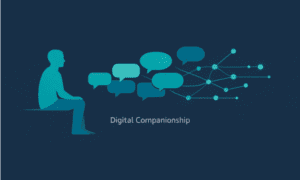The workforce management software market in 2025 is witnessing a seismic shift, driven by the complexities of globally dispersed teams, escalating regulatory demands, and a heightened imperative for tangible ROI from HR technology investments. The leading SaaS platforms have evolved beyond traditional HR tasks—now offering strategic leverage to finance, legal, and IT leaders through advanced automation, seamless global compliance, and unprecedented operational visibility.
Selecting the right WFM software isn’t merely operational—it’s strategic. Here, we explore the top 10 SaaS solutions shaping the market in 2025, highlighting their core strengths, unique differentiators, and proven impacts on midsize to enterprise organizations.
1. Workday
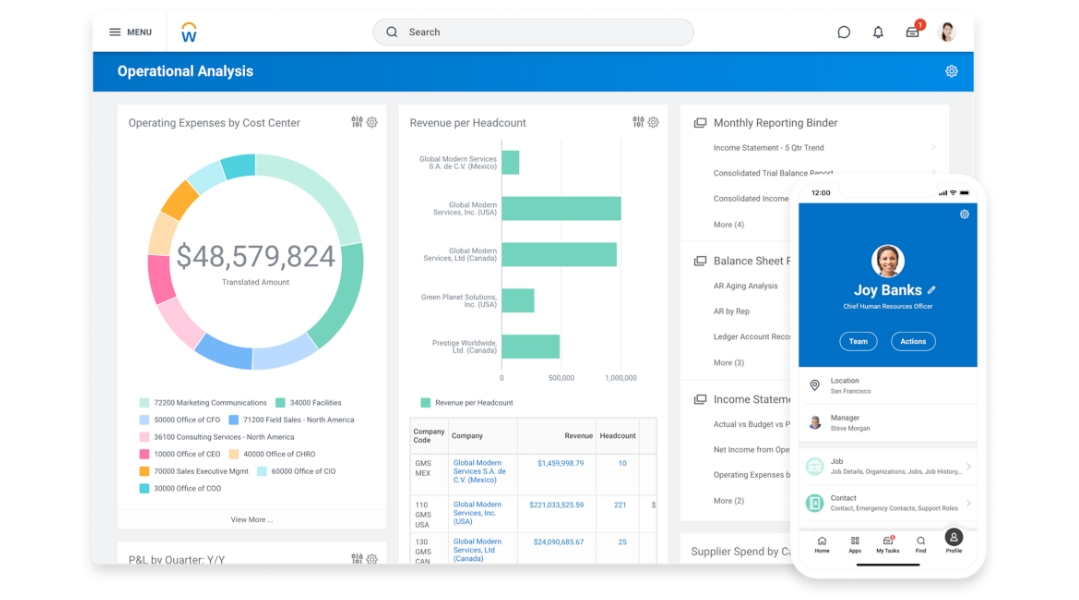
Best for: Large enterprises with complex, global HR and finance needs
Pricing: ~$34–42 PEPM (per employee per month); enterprise-scale only
Workday is a leading cloud-based Human Capital Management (HCM) suite that serves large enterprises. It provides a comprehensive platform covering HR, workforce management, payroll, and even financial management in one system.
Why it leads:
Workday remains the gold standard for large enterprises looking to unify HR, payroll, and finance into one system of record. Its AI-powered analytics and financial integrations make it more than an HR tool—it’s a strategic workforce command center. Executives appreciate how workforce data feeds into financial reporting in real time, enabling better headcount forecasting and cost modeling.
Watch for:
Workday’s cost and complexity make it prohibitive for smaller orgs. Implementation can take 6–12 months with substantial consulting overhead. Flexibility is limited compared to newer modular competitors.
Large enterprises and fast-growing upper-mid-market companies are Workday’s sweet spot. Organizations with 500+ employees that need a robust, integrated HCM — especially those operating across multiple countries or with complex HR needs — will find Workday a good fit.
2. Juggl
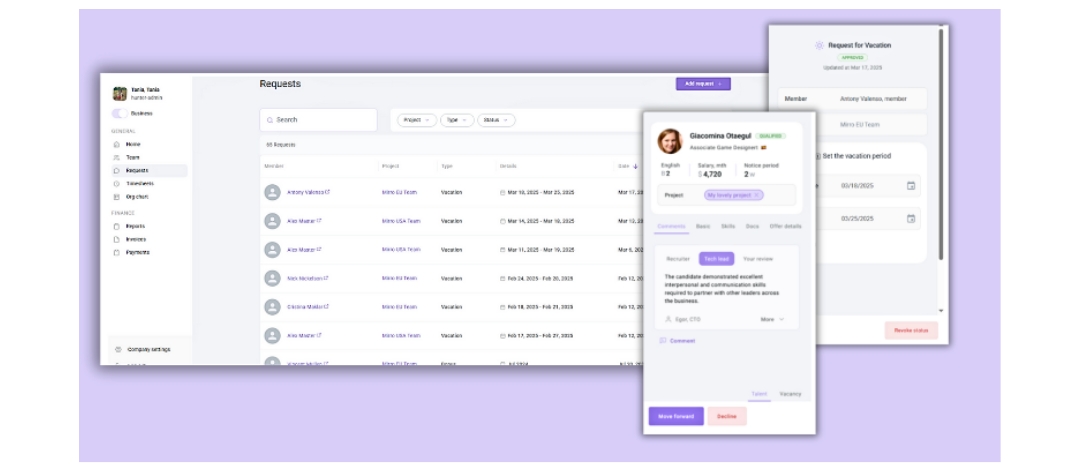
Best for: SMBs and mid-market teams scaling globally
Pricing: ~$8–12 PEPM
Juggl is a newer entrant offering a unified platform for payroll and workforce management, particularly for companies with remote or hybrid teams. It consolidates HR, legal, and financial data into one system, aiming to remove the hassle from managing a distributed workforce. Juggl emphasizes ease of use (minimal learning curve) and customization to company-specific policies.
Why it’s rising:
Juggl is a standout in 2025 for its nimble approach to global payroll and distributed workforce management. Designed for hybrid and remote teams, it automates time-consuming tasks like timesheet processing and multi-country compliance. CFOs favor its low overhead and broad Zapier-based integration options, making it easy to plug into existing stacks.
Caveats:
Still a younger player—while user satisfaction is high, some advanced features (e.g. predictive workforce analytics) are still maturing.
Juggl is best for small to mid-sized businesses (and even divisions of larger enterprises) that have distributed or international teams and want a unified, cloud-based solution for hiring, paying, and managing workers globally. It serves various industries (tech, healthcare, professional services, etc.) and can scale with a growing company. Its customizable nature and broad integrations make it suitable for companies that need to adapt the system to their specific payroll rules or integrate with existing tools.
3. Paycom
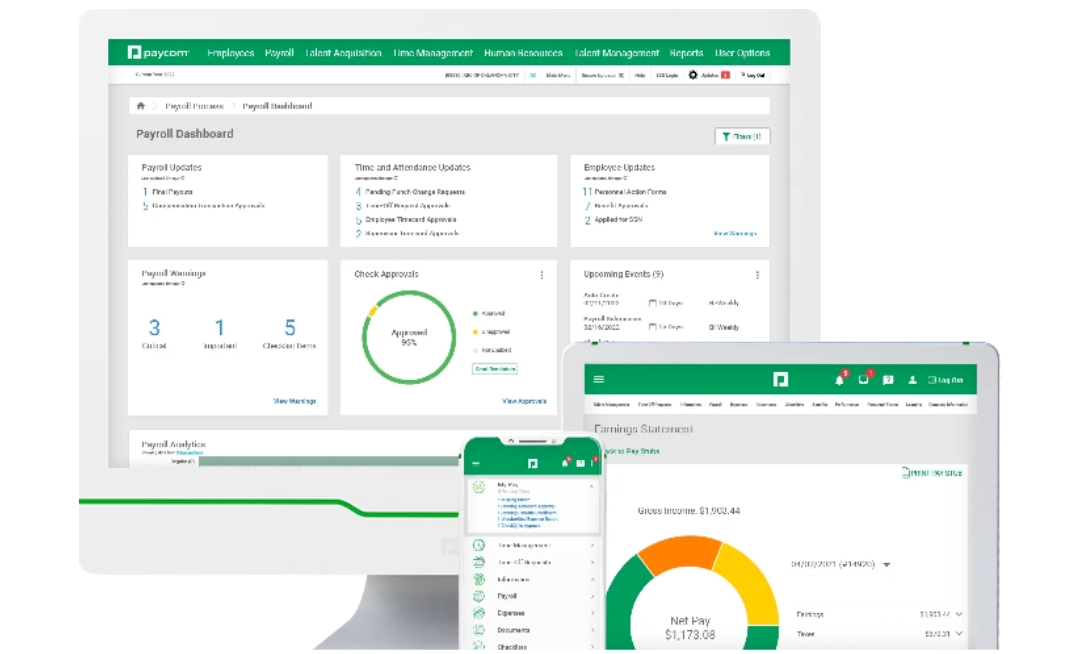
Best for: Mid-size U.S. firms focused on payroll modernization
Pricing: ~$25–36 PEPM (custom)
Why it’s different:
Paycom’s employee-driven payroll model (“Beti”) is reshaping how payroll is processed. Employees validate their data before payroll runs, resulting in 90% time savings for payroll teams and fewer downstream corrections. This distributed accuracy model is highly valued by lean HR departments.
Keep in mind:
It’s U.S.-centric and may not suit international growth strategies. Beti adoption requires a cultural shift—employees must actively engage in their own payroll process.
Paycom is best for mid-sized businesses (roughly 100 to a few thousand employees) that are looking to streamline and modernize their HR and payroll processes. It’s particularly attractive to companies that are tired of manual payroll input or want to eliminate duplicate data entry. Industries such as healthcare, professional services, hospitality, and retail have adopted Paycom – essentially any sector with a sizable workforce that could benefit from employees handling parts of their own HR data. Companies in growth mode, expanding from, say, 100 to 500 employees, often find Paycom a good fit as it can scale with them and prevent the need to add payroll headcount. Paycom is also U.S.-centric, so it fits those whose operations are largely domestic. If a company values employee self-service and accountability, Paycom’s model will align well with that culture.
4. Paylocity

Best for: Mid-sized orgs that value HR + employee engagement
Pricing: ~$8–12 PEPM, modular
Paylocity is a cloud HR and payroll provider focused on the mid-market, often serving organizations in the 50 to 1000 employee range. It offers a comprehensive platform covering core HR, payroll, benefits, time and attendance, recruiting, performance, and more. Paylocity’s differentiation comes from its emphasis on user experience and employee engagement tools (like an in-app social feed). It’s often seen as a friendly, tech-forward alternative to some legacy providers. Paylocity has gained significant market share in the mid-sized HRIS space through efficient implementations and competitive pricing.
What makes it human:
Paylocity blends traditional HRIS functionality with modern UX and social tools like its internal “Community” feed. This not only handles time, payroll, and benefits—but also drives employee recognition and communication. For companies building culture alongside compliance, it’s a hidden gem.
Limitations:
Primarily U.S.-focused. Analytics and niche modules (like advanced succession planning) are less robust than enterprise platforms.
Paylocity is best for mid-sized organizations (50 to 2000 employees) that want a comprehensive HR solution with an emphasis on usability and employee engagement. It’s quite popular among financial services firms, nonprofits, educational institutions, municipalities, and professional services companies. Such organizations often have enough complexity (multiple locations, different pay grades, etc.) that they need a solid system, but they also want something easy to manage without a massive HRIS team. Paylocity’s sweet spot is companies that might be moving off of basic payroll providers (like ADP Run or Paychex) and need a step-up in features as they grow, or those frustrated with older, clunky interfaces who seek a more modern platform for HR that employees will actually use.
5. Rippling
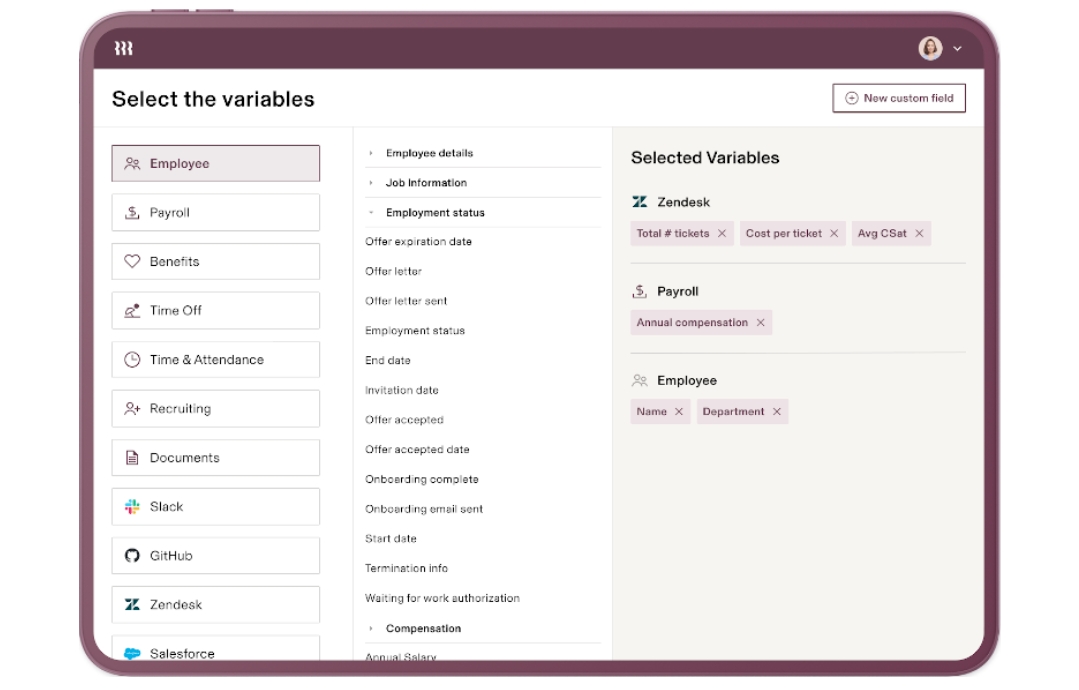
Best for: Tech-forward SMBs looking to unify HR, IT & Finance
Pricing: ~$8 base + ~$20–30 PEPM depending on modules
Rippling is a newer SaaS platform (founded in 2016) that uniquely combines HR, IT, and finance management in one system. While primarily an HRIS for small and medium businesses, its expanded scope allows companies to manage employee data, payroll, benefits, and even IT device management and app provisioning from one place. Rippling is best known for its sleek user experience and extremely rich integration capabilities. It’s targeted at tech-savvy SMBs and mid-market companies that value automation and integration over having a huge array of built-in HR features.
Why it stands out:
Rippling offers a radically integrated approach—HR, device management, app provisioning, and payroll from a single platform. Onboarding a new hire? Rippling can issue a laptop, create their Slack/Zoom accounts, and enroll them in benefits—automatically. Integration is its superpower, with 1000+ apps supported and a no-code workflow engine.
Watch for:
Not ideal for traditional enterprises or deep HR process customization. Some modules like learning or performance are lightweight.
Best fit for small and medium businesses, especially those in the tech, startup, or modern services space, are Rippling’s best fit. For example, a 150-employee tech startup that is distributed across several states (or countries) would get tremendous value from Rippling’s unified approach – onboarding is seamless and IT setup is handled, which is a big relief if you don’t have a large IT department. Companies that heavily use cloud apps and want to automate employee access (new hire gets added to all needed apps, leaver gets removed from all apps) will find Rippling unparalleled in that integration aspect. It’s also great for PE-backed companies or fast-growing firms that plan to scale headcount quickly – Rippling scales with growth without needing process overhauls. If a company doesn’t have a lot of internal HR/IT specialization, Rippling serves as an all-in-one command center.
6. Oracle HCM Cloud
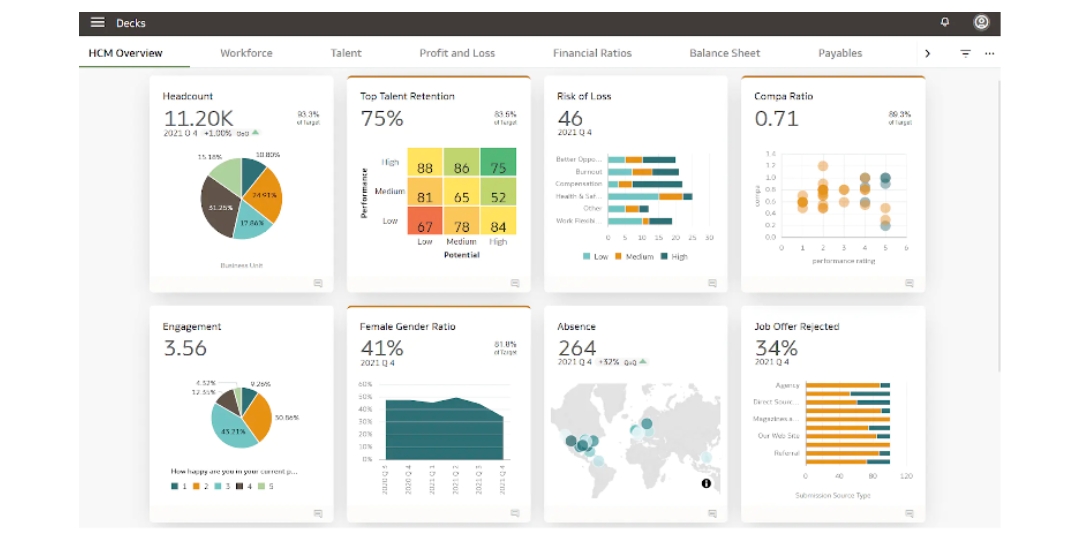
Best for: Large enterprises already in the Oracle ecosystem
Pricing: ~$15 PEPM; minimum 1,000 employees and multi-year contract
Oracle Fusion Cloud HCM is Oracle’s flagship cloud-based human capital management suite, part of the broader Oracle Cloud applications. It covers core HR, payroll, benefits, talent management, and workforce management in an integrated platform. Oracle HCM is designed to serve large organizations, often those already using Oracle for other enterprise systems. For CFOs, one attraction is that Oracle HCM can natively tie into Oracle’s financial and ERP software, providing a single vendor solution for both financials and HR. It’s a highly customizable and scalable system, suited for complex enterprise needs.
Why it matters:
Oracle HCM Cloud delivers a unified and deeply integrated workforce management suite within Oracle’s enterprise cloud stack. The key advantage: a single-vendor ecosystem that ties labor data directly into financial and operational workflows.
Why it’s trusted:
Oracle Fusion Cloud HCM is built for scale, depth, and control. It unifies HR, payroll, talent, and compliance in a single platform—with seamless integration into Oracle ERP and Financials. For global enterprises, it brings the rigor and reliability of the Oracle ecosystem, backed by powerful automation, robust analytics, and enterprise-grade security. It’s especially valued by CFOs and CIOs for delivering real-time workforce data that directly informs financial decisions.
Downside:
The platform comes with a steep entry point—both in terms of cost and complexity. Smaller or less centralized companies may find Oracle HCM overly rigid, and the UI still feels heavy compared to modern SaaS-first tools. Without other Oracle products in the stack, it loses some of its integration edge. Training, implementation, and license management all require significant internal resourcing.
Oracle HCM is ideal for large, complex enterprises—particularly in sectors like manufacturing, finance, public sector, and multinational retail—where workforce operations and financial systems must be deeply integrated. If you’re already running Oracle for ERP or financials, the case for Oracle HCM is strong. But for companies seeking flexibility, modularity, or simplicity, it’s likely too heavyweight.
7. Papaya Global
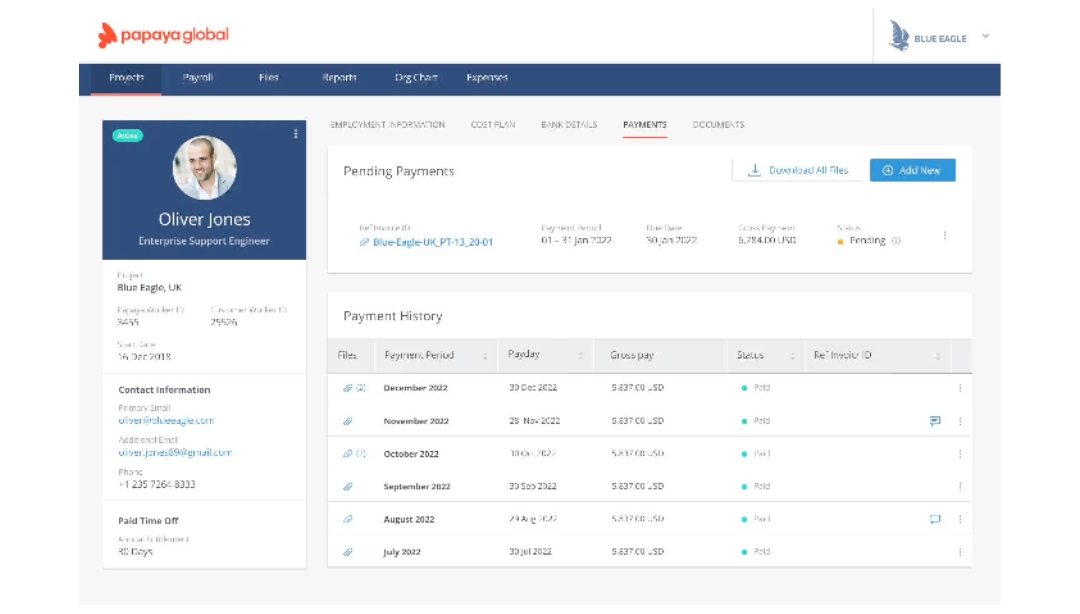
Best for: Enterprises consolidating global payroll and compliance
Pricing: ~$20–30 PEPM for payroll; ~$600+ for EOR
Papaya Global is a SaaS platform offering end-to-end global workforce management – including global payroll processing, employer-of-record services, contractor management, and workforce analytics. Founded in 2016, Papaya has positioned itself as a “Workforce OS” that can consolidate a company’s worldwide payrolls and payments onto one intelligent platform. It’s particularly geared for mid to large companies that want to manage all their global payroll vendors and processes in one place. Papaya stands out for its emphasis on automation and AI in ensuring compliance and efficiency in payroll. For finance leaders dealing with multi-country operations, Papaya promises centralized control and cost savings.
Enterprise-grade control:
Papaya offers a unified global payroll infrastructure, aggregating country-specific vendors into one dashboard with real-time analytics. Its embedded AI checks for compliance risks, wage anomalies, and forecast modeling—turning payroll into a strategic finance lever.
Challenges:
Implementation complexity is high—best for enterprises already operating across multiple jurisdictions. It’s more platform than plug-and-play.
Papaya is best for mid-sized to large companies (e.g., 200 to tens of thousands of employees) that operate in multiple countries and want to unify and outsource the payroll function. Industries like technology, manufacturing, pharmaceuticals, and professional services with global offices or remote workforce have turned to Papaya. It’s particularly useful for companies that grew internationally via acquisitions or disparate expansion and ended up with a patchwork of payroll systems; Papaya can streamline that. Also, if a company is scaling international hiring quickly (like opening many new international sites or hiring lots of remote talent worldwide), Papaya provides a framework to handle that efficiently. CFOs who want central control and visibility over labor costs globally, and HR leaders who want to ensure compliance and reduce admin work, will see Papaya as a strong solution. Smaller companies (under ~100) might find Papaya overkill unless they are distributed across many countries – in which case, Papaya can serve them too, but often they might opt for simpler solutions like Deel for just a few people.
8. Remote
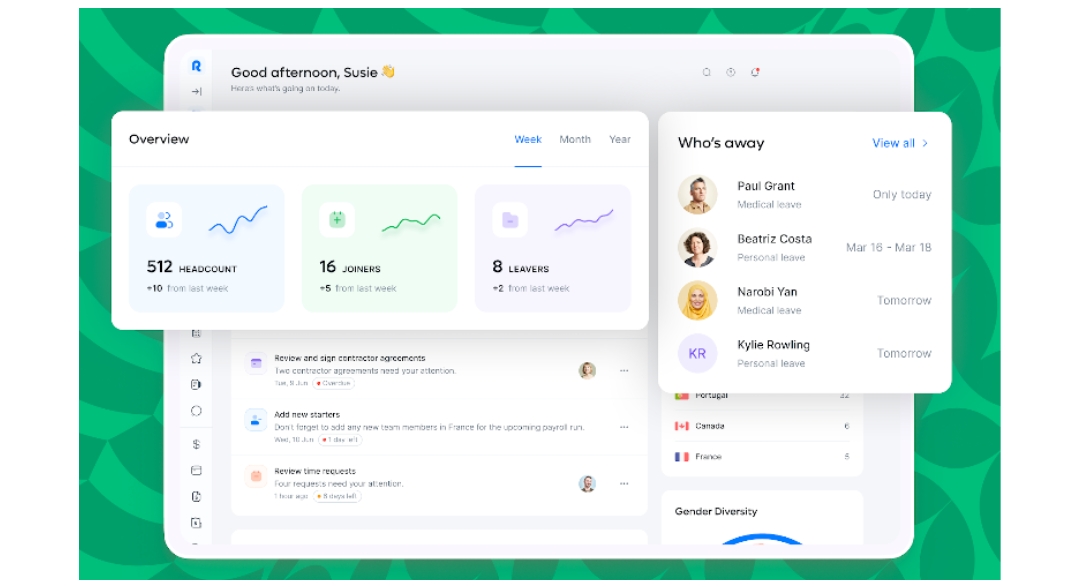
Best for: Cost-conscious global hiring and startups
Pricing: From $18/month for contractors; ~$599/month for EOR
Remote is another leading SaaS platform providing global employer-of-record services and international contractor payments. Founded in 2019 (around the same time as Deel), Remote’s mission is to simplify hiring anywhere in the world, but with an emphasis on transparent pricing and accessibility for smaller businesses. Remote owns legal entities in many countries to act as EOR, similar to Deel and Papaya’s models. It has quickly grown as a strong competitor in the global employment space, often attracting customers with slightly lower price points or promotional offers (like free trials). For executives, Remote offers a straightforward way to tap global talent, with a focus on being cost-effective and user-friendly.
What’s unique:
Remote offers many of the same benefits as Deel (global hiring, compliance, payments) but positions itself as more accessible, with transparent pricing and even free trials. For bootstrapped startups hiring their first overseas teammate, Remote often becomes the gateway to global talent.
Trade-offs:
Slightly fewer integrations and feature depth vs. Deel. For larger orgs or heavy customization, may hit limits.
Remote is excellent for small to mid-sized businesses that need global hiring capability but are cost-sensitive or just testing the waters. It’s popular among startups, remote-first companies, and tech firms who often hire internationally early on. If a startup is choosing between building an offshore entity vs. using an EOR, Remote’s pricing and trial might sway them to try EOR first. Also, companies that have only a handful of overseas workers might prefer Remote to keep costs lower.
9. WorkForce Software
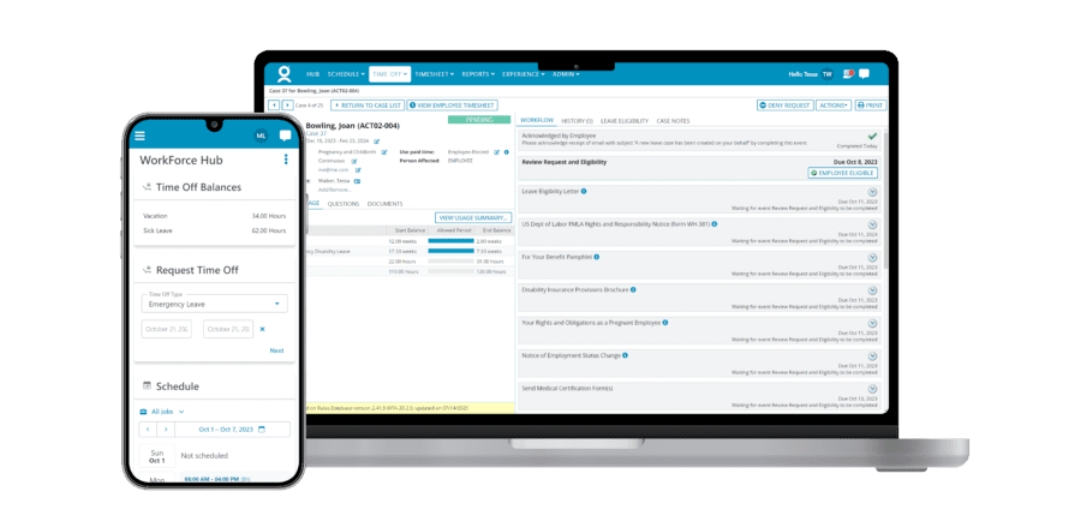
Best for: Enterprises with complex scheduling and union rules
Pricing: Custom (enterprise license)
WorkForce Software’s solutions are known for flexibility and are popular in industries like manufacturing, public sector, energy, and retail where managing shifts, union rules, and varied pay rules are critical. For executives, WorkForce offers the ability to tightly control labor operations, which can lead to significant cost savings and risk mitigation.
Why operations love it:
WorkForce Software excels where others stumble: shift work, labor law compliance, and timekeeping at scale. Used in manufacturing, transit, and healthcare, it handles intricate rules for overtime, rest periods, and union contracts—with real-time alerts and forecasting.
Not for:
White-collar-only environments. Implementation and learning curve are steep; this is a heavy-duty WFM.
Best Fit: Large enterprises (5,000+ employees) especially those with complex hourly workforce management needs. This includes: unionized environments (manufacturing plants, transit authorities), 24/7 operations (utilities, healthcare hospitals), multi-location retail or hospitality chains where scheduling is central, public sector organizations (government offices, police/fire with complicated shifts). WorkForce Software has a strong presence in manufacturing, energy, utilities, retail, and government.
10. Gusto
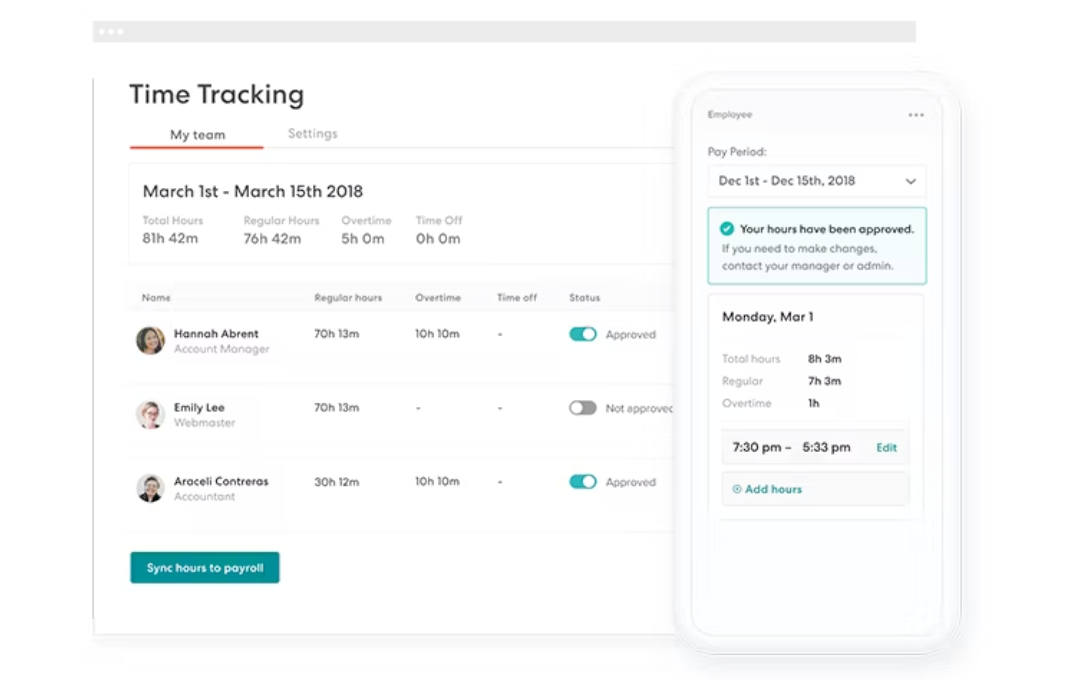
Best for: Small U.S. businesses seeking simplicity
Pricing: From $40/month base + $6–12 PEPM
Gusto is a popular SaaS payroll and HR platform tailored for small businesses. Launched in 2012 (formerly ZenPayroll), Gusto has become well-known for its easy-to-use interface, transparent pricing, and comprehensive features for companies typically with 1 to 200 employees.
Why it’s loved:
Gusto takes the complexity out of payroll and HR for small teams. With intuitive UX, automated tax filings, integrated benefits, and a touch of personality (payday messages!), it wins hearts in Main Street America.
Downside:
Limited to the U.S., and not designed for scale or complexity. For companies with international ambitions, Gusto is a great start—but not the whole journey.
Small businesses, startups, and growing companies typically under 100 employees (though many use it up to a few hundred) that want an all-in-one payroll and basic HR solution without needing an internal HR department or external PEO. Industries vary: tech startups, creative agencies, restaurants (though restaurants with tip handling might use more specialized systems, Gusto can handle tips, just maybe not as seamlessly as some niche systems), retail boutiques, consultancies, nonprofits – basically any small employer. Gusto is also popular among distributed small teams because it handles multi-state payroll effortlessly (with remote work, a 20-person startup might already be in 5 states; Gusto makes that easy, filing each state’s taxes properly).
There’s no “best”—only best fit
As the workforce needs to diversify, the definition of “workforce management” itself is fragmenting—into global compliance, self-serve payroll, embedded IT automation, and AI-driven forecasting. The platforms above represent this shift: from heavy HRISs to nimble orchestration tools, from single-country payroll to seamless cross-border hiring.
What matters now is alignment. The right solution isn’t necessarily the most feature-rich—it’s the one that matches your company’s size, geography, compliance burden, and operational culture.
Whether you’re a CFO looking to consolidate systems, an HR lead scaling global teams, or a founder navigating hybrid work—your WFM platform will increasingly shape your agility, resilience, and bottom line.







